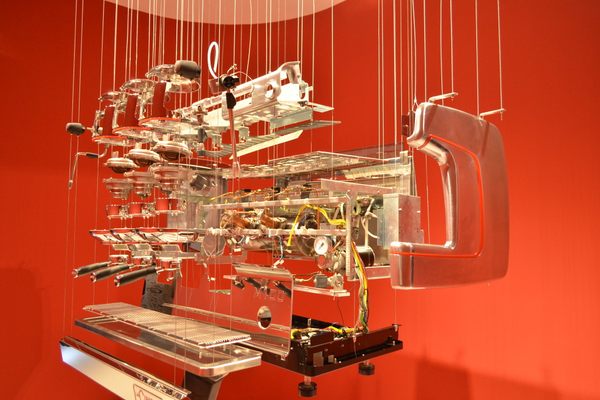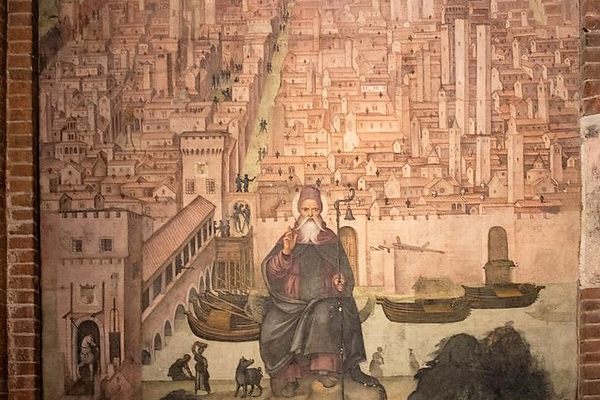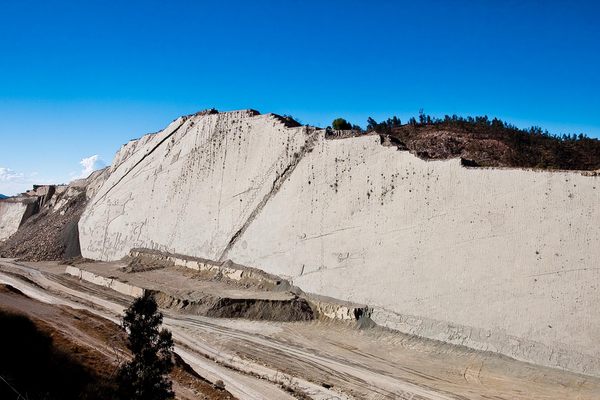Cathedral of St. Ambrose
The Cathedral of St. Ambrose has been hiding a special parishioner within its walls.
Among all of the followers attending the Cathedral of St. Ambrose in Vigevano, a prehistoric remnant remains the most faithful.
According to one paleontologist, the stone that was used to erect the walls of St. Ambrose holds the remains of an unlikely resident: a dinosaur, fossilized within the walls. The cranium, nasal cavity and teeth of what appears to be a dinosaur’s skull can be viewed by X-ray, but Andrea Tintori – the University of Milan paleontologist who found the skull – feels the remains are so clearly dino in nature they could be easily identified without any technical skills.
However, most paleontologists argue the fossil isn’t that of a dinosaur. Instead, it’s the cross-section of an ammonite, an extinct type of mollusk that’s fairly commonly found in fossils.
The specimen made its way into the walls sometime between 1532 and 1660, when rock was cut in sections and transported to this location to build the cathedral. Tintori also found a second section of the same skull in another slab nearby.
The stone, called Broccatello, was mined in Arzo, Switzerland, and may have been been host for this fossil for as long as 190 million years. A 3-D reconstruction is underway to help solve the mystery once and for all, and figure out what animal the skull belonged to. Until they know more, the skull remains an interesting spectacle and a surprise addition to the cathedral’s decor.

















Follow us on Twitter to get the latest on the world's hidden wonders.
Like us on Facebook to get the latest on the world's hidden wonders.
Follow us on Twitter Like us on Facebook